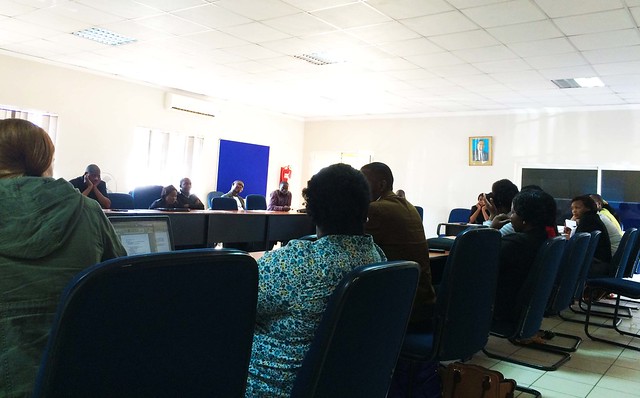Yesterday, Karen and I travelled to Lilongwe (the capital) with the CPAP Office staff to attend the CPAP Coordinator Meeting. This meeting is an opportunity for the district coordinators for the CPAP project to come together and talk about the progress of CPAP implementation at their respective hospitals. Just before the morning tea break, Norman, our Ministry of Health point person and ARI Programme Coordinator, exclaimed, “Data is Power!” It’s from his bold statement that this post gets its title.
The CPAP Coordinator Meeting is all about data visualization. Every single coordinator is expected to present data about the use of CPAP and the rates of neonatal survival in their districts. It is meetings like this that help make the Rice CPAP project a beneficial effort. Economist William Easterly writes in his book The White Man’s Burden that most aid efforts lack a system of adequate feedback and evaluation, which leads to a disconnect between donors, implementers, and end-users. The CPAP Coordinator Meeting addresses exactly this issue by fostering communication between CPAP project staff and the people who are implementing the project at the district levels. The presentations are impressive–coordinators aren’t afraid to admit that there are weak spots in their implementation efforts and they are happy to put forward solutions and ideas to help their colleagues.

Discussion at the Coordinator Meeting featuring a Portrait of Prof. Arthur Peter Mutharika
Despite the merits of this conference of coordinators, what is equally evident in the meeting is how hard it is to collect, record, and archive data in an accessible way. Numerous presenters talked about how entire months of data on neonatal mortality rates were unavailable to them because of missing logbooks, locked storerooms, insufficient monitoring forms, or incorrect data entry. It makes evaluation extremely hard, especially since the CPAP project is now operating in almost every Malawian district. Each district and each hospital is independently in charge of recording data, which makes it easier for human error and logistical malfunctions to corrupt data collection. Norman’s exclamation this morning was in response to the fact that hospital after hospital came up to present only to show missing data or poorly collected metrics. His frustration is definitely warranted. ‘
The final piece of the breakdown in data collection is the lack of reliable communication technology. In several districts, supplies and data collection materials were in short supply mostly because district coordinators failed to contact the CPAP Office in Blantyre in order to inform them of the situation. In other instances, broken CPAPs were left unfixed for months because of miscommunications. There are shaky channels of communication between district hospitals, PAM, and the CPAP team, which adds another barrier to effective data management.
The CPAP project is extremely good at training, motivating, and following up with district-level data collectors. However, there are inherent obstacles int he Malawian healthcare system that hinder evaluation efforts. Once again, this is an opportunity for an EMR system to be effective. It would prevent data loss and could aid in communication, making research on healthcare interventions far more feasible. If data is power, then EMR systems are keys to the kingdom, since they will open up a whole new realm of easy data collection and management.